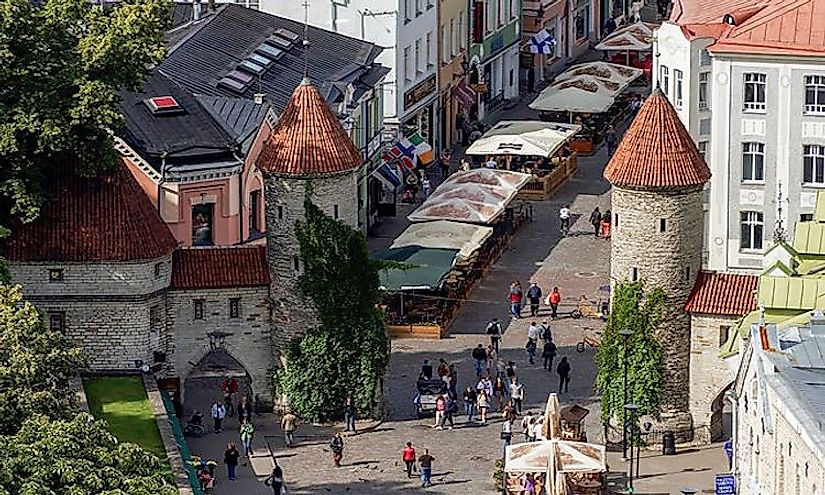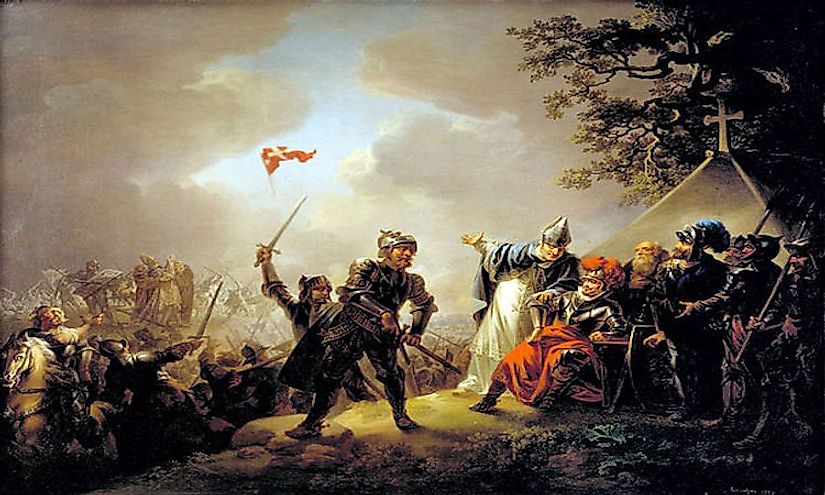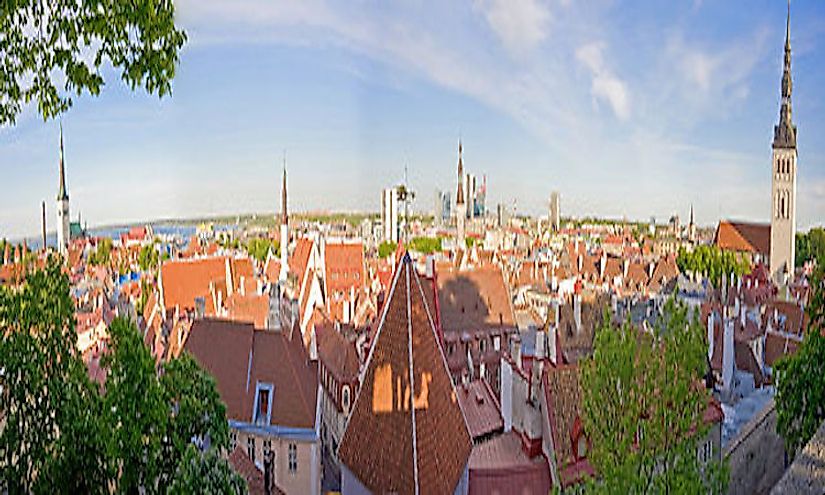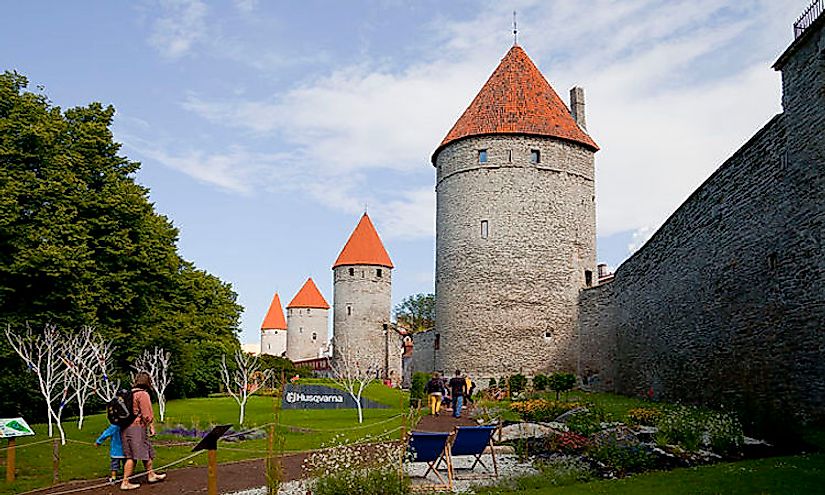Historic City Of Tallinn, Estonia

5. Teutonic Crusaders and Early History -

The city of Tallinn, then known as Lyndanisse, was the capital of the ancient Estonia country of Revala (c.800s-1224). In 1219, the city was conquered by the Kingdom of Denmark (c.936-1397) during the Estonian Crusade (1208-27). The Estonian Crusade was part of the greater Livonian Crusade (1198-1290) that took place in the area of modern day Latvia and Estonia. The Crusades were mainly undertaken by Bohemia, Denmark, the Holy Roman Empire, Poland, Sweden and the Teutonic Order. After this event, the city was part of Danish Estonia (1219-1346) and became known as Reval. In 1346 the Kingdom of Denmark, sold Danish Estonia to the State of the Teutonic Order (1230-1525) for 19,000 Köln marks.
4. Tallinn in Hanseatic League Commerce and Politics -
In 1285 the city of Reval (now Tallinn) joined the Hanseatic League, a mercantile and defensive confederation of merchant guilds and cities. The city was located in a key and strategic trading location, situated at the crossroads of trade between Western Europe, Northern Europe, and Russia. After the city was acquired by the State of the Teutonic Order, it rose to prominence as an extremely important member of the Hanseatic League. Reval was at its height as from the 14th to until the 16th century as part of the Hanseatic League, gaining wealth and power, which stands out in the grander of the now ancient public buildings, churches and merchants' houses from the period. Around the start of the 16th century, the Hanseatic League started to decline and loss territory and trading control of the Baltic Sea to the future Swedish Empire (1611-1721), as well as losing key offices in the Belgian city of Bruges and the Russian city of Novgorod. In 1561 Sweden took political control of Reval during the Livonian War (1558-83) and at the end of the war Reval officially became part of Sweden.
3. Architecture and Unique Attractions -

The historic center of Tallinn is a United Nations Educational, Scientific and Cultural Organization (UNESCO) World Heritage Site, one of only two in Estonia. In the city of Tallinn, there are more than 60 different museums and art galleries, including the Tallinn City Museum, the Estonian Museum of Natural History and the Kumu Art Museum. On Toompea hill in the center of the city, sits Toompea Castle, which had been known to be in use since the 9th century and is now where Estonia's Parliament is located. There is the grand Kadriorg Palace, which was built in 1725 by Emperor of Russia Peter the Great (1672-1725) for his wife Catherine I of Russia (1684-1727). There is also the Kiek in de Kök artillery tower built in 1475 and a defensive tower named Fat Margaret built in the early 16th century. There are also a number of churches in the city, with the oldest of these being St.Olaf's Church, built at some point in the 12th century.
2. Natural Surroundings, Sights, and Sounds -

The city is divided into four major areas, the Upper Town (Toompea), Lower Town (All-linn), Kadriorg and Pirita. Toompea is on a hill and overlooks the rest of the city, providing scenic views and has been the seat of power for whoever has ruled Estonia. All-linn is one of the most well preserved medieval towns in all of Europe and includes the town square to give tourists a decent idea of what a medieval town may have looked life and how it was laid out. Kadriorg is located about 1 mile from the center of the town and is where buses and trams can transport citizens and tourists alike. Pirita is the coastal district of the town, where the marina is located, and visitors can take boats down the Pirita River. This area also houses the Tallinn Botanic Garden, opened in 1961, which is the largest garden in all of Estonia. The city is home to a variety of festivals, like the Estonian Song Festival, which is one the biggest choral event on Earth and takes place in July every five years. There is also the annual Tallinn Black Nights Film Festival, which has been held every year since 1997 and is the only festival in the all of the Baltic or Nordic regions of Europe to be accredited with the International Federation of Film Producers Association (FIAPF).
1. Threats and Conservation Efforts -
The city of Tallinn on top of being a World Heritage site is also recognized as a national monument by the government of Estonia. The boundaries and buffer zone of the protected site were recently increased in 2008 to included the upper town, the lower town inside the medieval era walls, 17th-century fortifications surrounding the Old Town area and also a variety of mostly 19th-century structures. The site is remarkably well preserved and has been able to maintain its integrity, while still being used as a living modern city. Many of the historic residential buildings have been refurnished to accommodate people in terms of safety and accessibility in case of emergencies. The site was confirmed by the Ministry of Culture of the Republic of Estonia in 1996 and was the first conservation area to be set up out of any of the countries that emerged from the Soviet Union. It is also protected by the Heritage Conservation Act of 2002.







